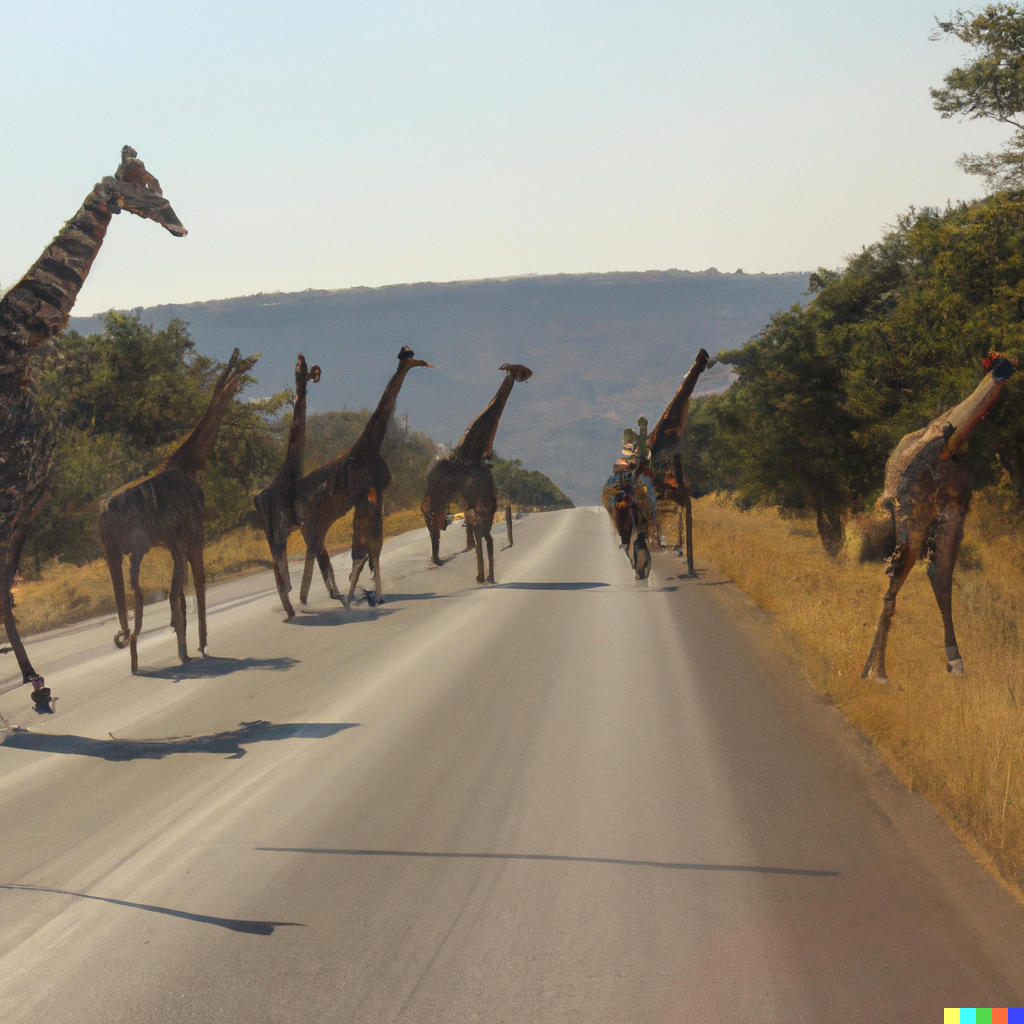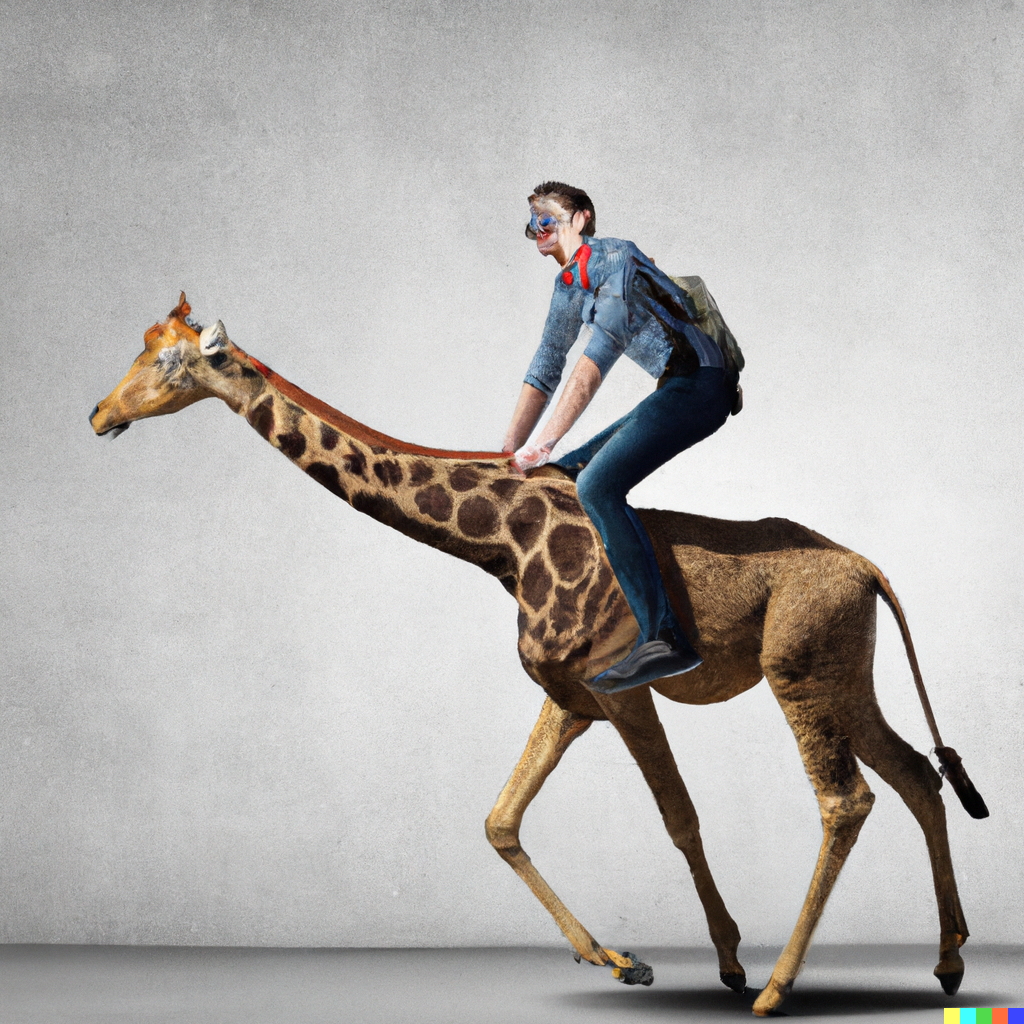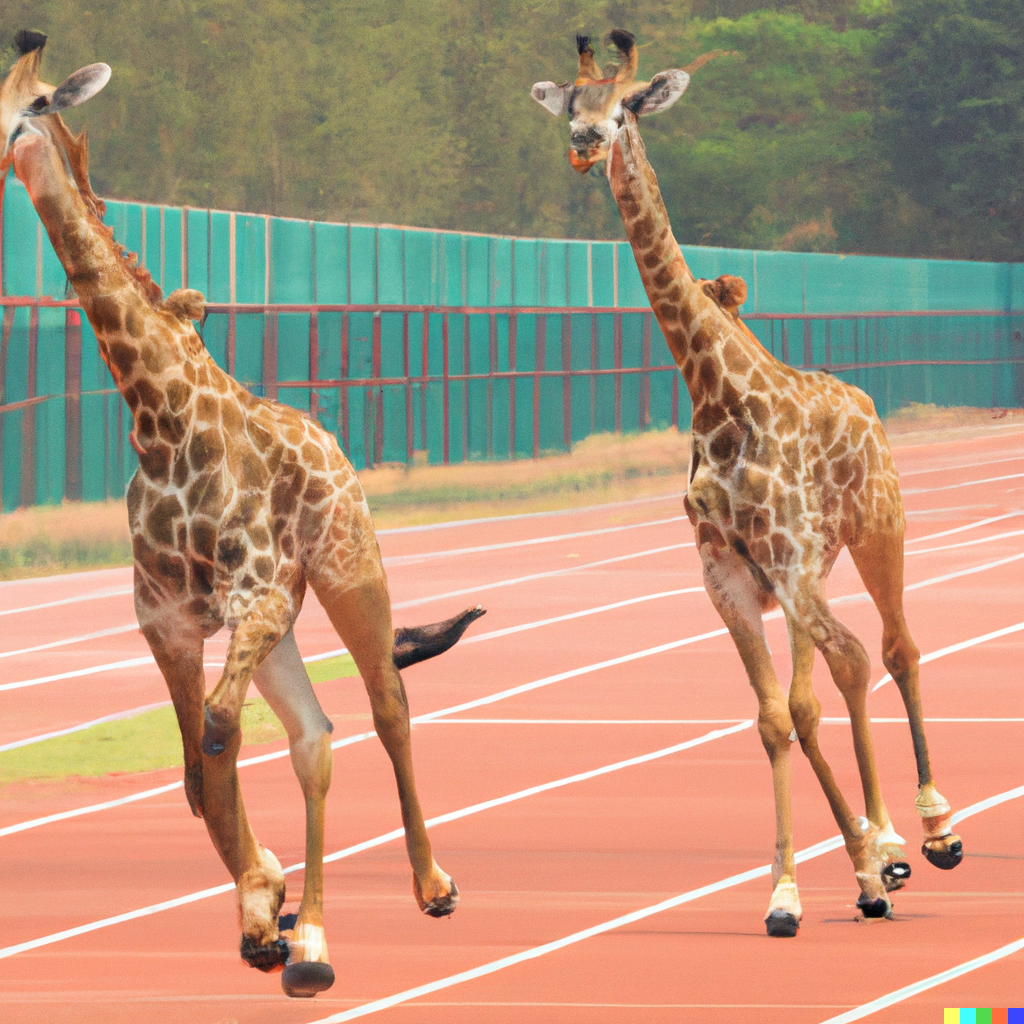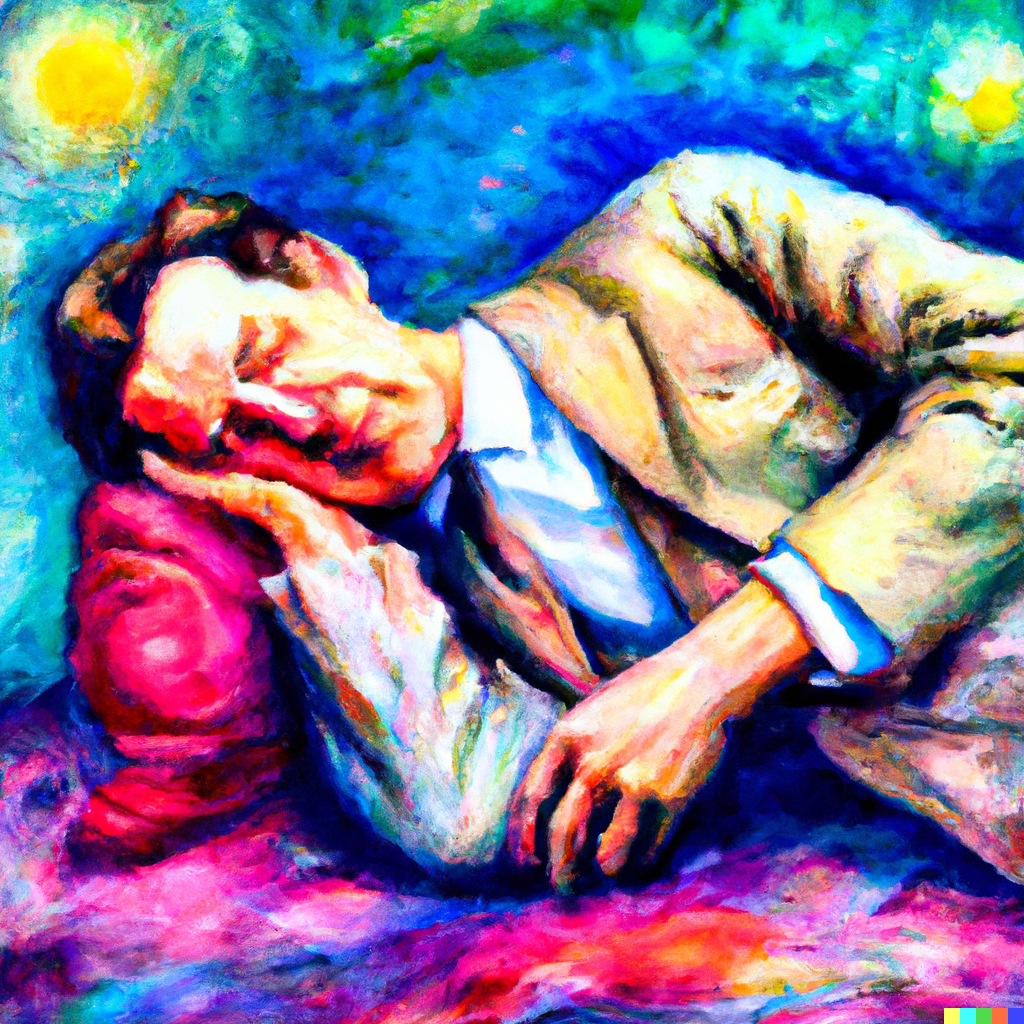
Written by Chat GPT
April 1, 2023

Imagine a world where giraffes, not horses, were domesticated and used as the primary means of transportation. In this thought experiment, we will explore the implications of such a world, considering changes in infrastructure, travel speed, and cultural impacts.
Section 1: Infrastructure Adjustments
1.1 Road Design
In a world where giraffes serve as the primary means of transportation, road designs would need to accommodate their unique size and shape. Wider lanes would be necessary to accommodate their large bodies and long legs. Additionally, bridges and tunnels would need to be taller to allow giraffes to pass through comfortably.
1.2 Public Transportation
Public transportation systems would also need to be adapted to suit giraffes. Instead of buses and trains, platforms might be designed for giraffe-mounted travelers to embark and disembark with ease. These platforms would need to be elevated and spacious, providing sufficient room for the giraffes and their passengers.
1.3 Parking and Hitching Posts
Traditional parking spaces and hitching posts would need to be reimagined to secure giraffes when not in use. Tall, sturdy structures would be necessary to ensure the animals are safe and comfortable while waiting for their riders.

2.1 Slower Pace of Life
Giraffes have an average walking speed of around 10 miles per hour (16 kilometers per hour), which is slower than the average speed of a galloping horse. Consequently, in a world where giraffes are the primary mode of transportation, the pace of life would be slower, and long-distance travel would take more time.
2.2 Energy Efficiency
Giraffes are known for their energy efficiency, with their slow, loping gait requiring less energy than the faster gaits of horses. This could lead to a more sustainable and eco-friendly mode of transportation, albeit at a slower pace.
3.1 Giraffe-centric Art and Literature
As a primary mode of transportation, giraffes would hold a central place in society, influencing art, literature, and mythology. Stories and legends might revolve around these majestic creatures, and their images could be prominent in paintings, sculptures, and other forms of artistic expression.
3.2 Sporting Events
Traditional equestrian sports, such as horse racing and show jumping, would be replaced with their giraffe equivalents. These events would require the development of new techniques and strategies to navigate the unique challenges presented by riding and competing on giraffes.

In a world where giraffes were domesticated as the primary means of transportation, significant adjustments to infrastructure, travel speed, and culture would be necessary. Roads, public transportation systems, and parking facilities would need to be redesigned to accommodate the size and shape of these towering creatures. The pace of life would slow down, but this slower form of travel could be more energy-efficient and eco-friendly. Finally, giraffes would have a significant impact on art, literature, and sports, reflecting their importance in everyday life.
Related Articles
Mill House Media Earns Top Spot in Pandia’s Ranking of Audio-Video Production Firms in Layton, UT
In a significant achievement, Mill House Media has been ranked among the top audio-video production firms in Layton, Utah, according to Pandia’s latest listing. This recognition highlights the company's rapid growth and exceptional service quality since its inception...
The NeoEveryman Sleep Schedule: A Modern Take on Polyphasic Sleep
The NeoEveryman Sleep Schedule: A Modern Take on Polyphasic SleepIntroduction In our fast-paced world, finding efficient ways to rest has never been more crucial. Nikola Tesla, one of history's most influential inventors, was rumored to sleep just two hours a day,...
The Digital Hoarding Dilemma: A Thought Experiment on the Future Impact of Data Accumulation
Explore the future consequences of digital hoarding, including emotional overload, privacy and security risks, and environmental impacts, as society navigates the challenges of data accumulation.




